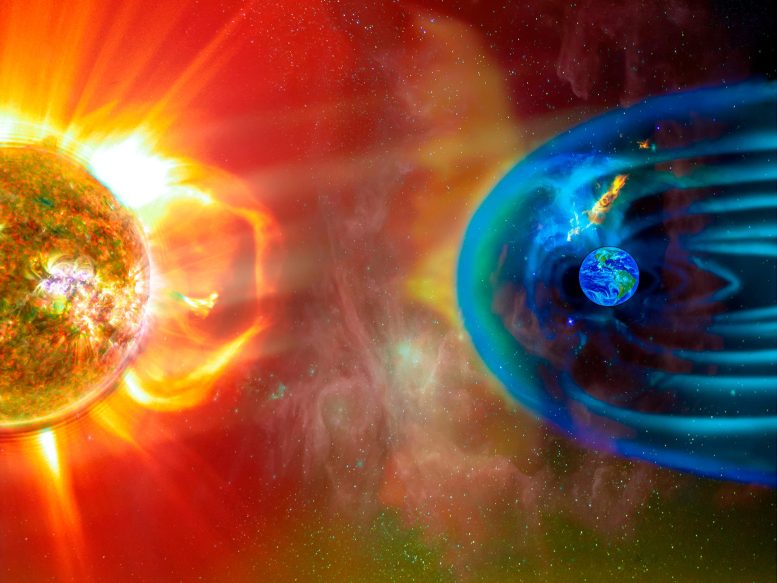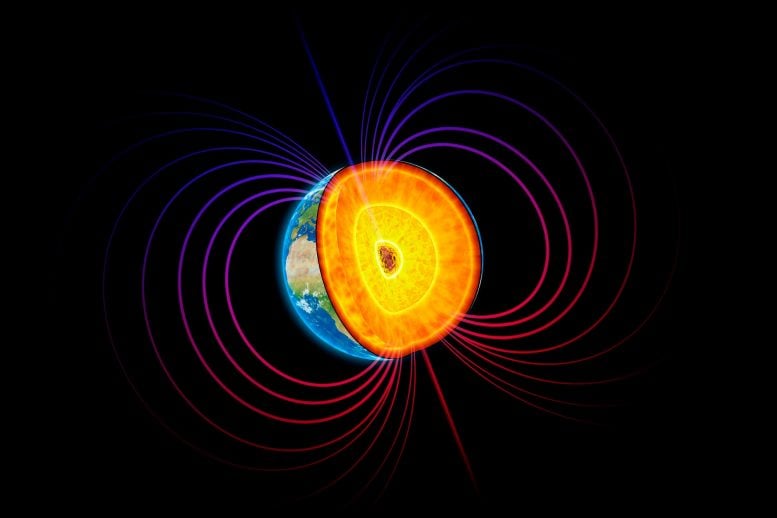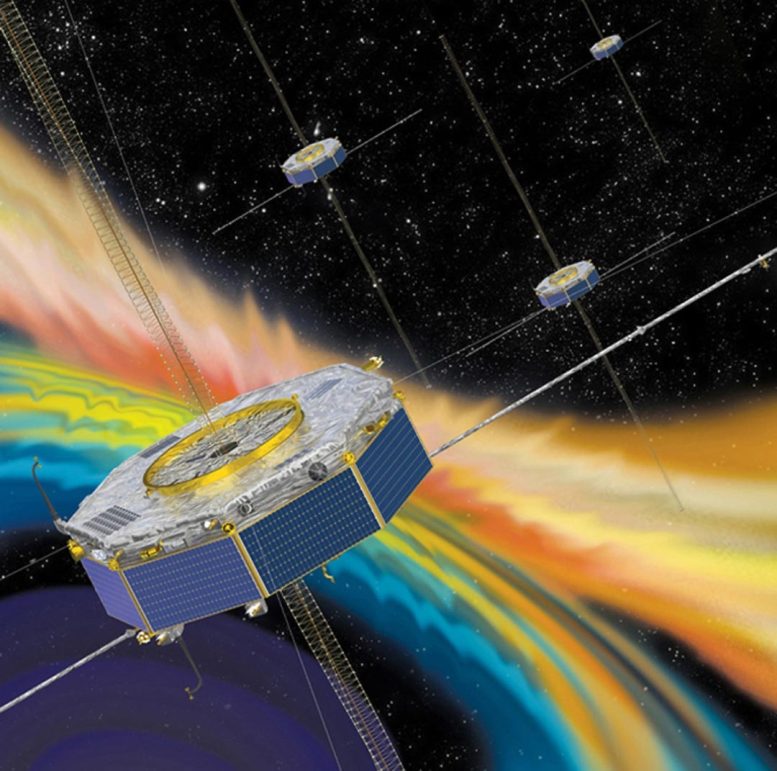

Earth’s magnetosphere, essential for protecting us from solar radiation, contrasts sharply with Mars, which lost its protective field. Studying this shield, especially through NASA’s missions like the Magnetospheric Multiscale Mission, is crucial for understanding space weather and its impact on Earth.
What Is Earth’s Magnetosphere?
Enveloping our planet and protecting us from the fury of the Sun is a giant bubble of magnetism called the magnetosphere. It deflects most of the solar material sweeping towards us from our star at 1 million miles per hour or more. Without the magnetosphere, the relentless action of these solar particles could strip the Earth of its protective layers, which shield us from the Sun’s ultraviolet radiation. It’s clear that this magnetic bubble was key to helping Earth develop into a habitable planet.
Enveloping our planet and protecting us from the fury of the Sun is the magnetosphere, a key to helping Earth develop into a habitable planet. Credit: NASA
Earth vs Mars: The Role of the Magnetosphere
Compare Earth to Mars – a planet that lost its magnetosphere about 4.2 billion years ago. The Solar wind is thought to have stripped away most of Mars’ atmosphere, possibly after the red planet’s magnetic field dissipated. This has left Mars as the stark, barren world we see today through the ‘eyes’ of NASA orbiters and rovers. By contrast, Earth’s magnetosphere seems to have kept our atmosphere protected.
Eftyhia Zesta of the Geospace Physics Laboratory at NASA’s Goddard Space Flight Center notes, “If there were no magnetic field, we might have a very different atmosphere left without life as we know it.”


The magnetosphere is a result of Earth’s internal magnetic field, produced by the rotation and convection of conductive materials in its core. This magnetic field extends into space, acting as a shield against the solar wind, thereby forming the magnetosphere.
Understanding and Studying the Magnetosphere
Understanding our magnetosphere is a key element to helping scientists someday forecast space weather that can affect Earth’s technology. Extreme space weather events can disrupt communications networks, GPS navigation, and electrical power grids.
The magnetosphere is a permeable shield. The solar wind will periodically connect to the magnetosphere forcing it to reconfigure. This can create a rift, allowing energy to pour into our safe haven. These rifts open and close many times daily or even many times hourly. Most of them are small and short-lived; others are vast and sustained. With the Sun’s magnetic field connecting to Earth’s in this way, the fireworks start.
Zesta says, “The Earth’s magnetosphere absorbs the incoming energy from the solar wind, and explosively releases that energy in the form of geomagnetic storms and substorms.”
Magnetic Reconnection and the MMS Mission
How does this happen? Magnetic lines of force converge and reconfigure, resulting in magnetic energy and charged-particles flying off at intense speeds. Scientists have been trying to learn why this crisscrossing of magnetic field lines – called magnetic reconnection – triggers such a violent explosion, opening the rifts into the magnetosphere.
NASA’s Magnetospheric Multiscale Mission, or MMS, was launched in March 2015 to observe the electron physics of magnetic reconnection for the first time. Bristling with energetic particle detectors and magnetic sensors, the four MMS spacecraft flew in close formation to areas on the front side of Earth’s magnetosphere where magnetic reconnection occurs. MMS has since been conducting a similar hunt in the magnetosphere’s tail.
MMS complements missions from NASA and partner agencies, such as THEMIS, Cluster, and Geotail, contributing critical new details to the ongoing study of Earth’s magnetosphere. Together, data from these investigations not only help unravel the fundamental physics of space, but also help improve space weather forecasting.

